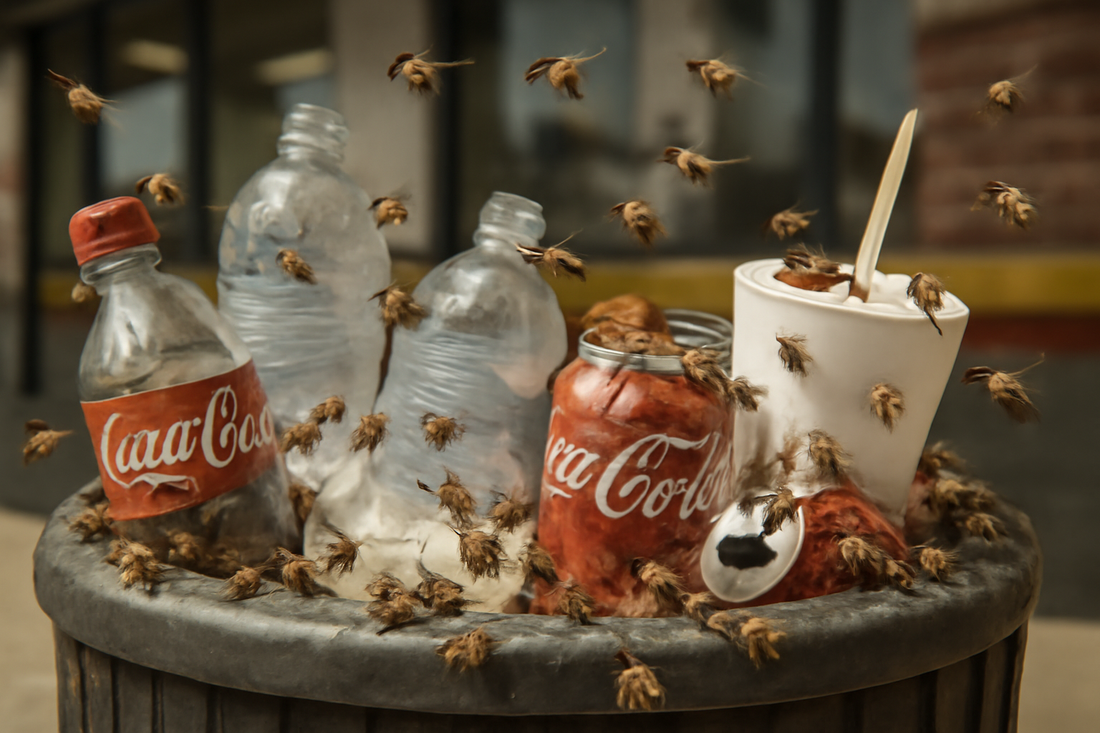Every summer, like clockwork, my phone starts blowing up:
“There are bees all over my pool!”
“They’re swarming the soda machine at the park!”
“We can’t eat lunch on the patio without getting mobbed!”
And I get it — nobody wants a cloud of bees at their pool party, wedding, or backyard BBQ. But here’s the truth: this time of year in Texas, it’s not that bees are suddenly meaner or more invasive… it’s that they’re desperate.
Welcome to the Dearth
In beekeeping, “the dearth” means exactly what it sounds like: a lack of resources. By August in Texas, the nectar-bearing plants are mostly dried up, the heat is unrelenting, and natural food sources for bees are few and far between.
But here’s the thing — it’s still plenty warm for bees to fly, and bees don’t take days off. So, being resourceful little problem-solvers, they start looking elsewhere for sugar and water. That’s when they turn up in places like:
- Swimming pools (chlorine and other minerals mimic natural “dirty water” sources they love)
- Outdoor bars and restaurants
- Sodas and sweet drinks at the park or amusement park
- Trash cans, picnic tables, and sno-cone stands
- Hummingbird feeders (sorry — those are basically “bee feeders” too)
Why This Happens
Bees need two main things in the summer heat:
- Nectar/sugar – the fuel that keeps them flying.
- Water – for cooling their hives and feeding larvae.
When flowers dry up, they get creative. Spilled Coke? That’s nectar to a bee. Pool water? A mineral cocktail.
The other risk during a dearth is robbing — when stronger hives attack weaker hives to steal their stored honey. If a colony is already struggling, robbing can wipe it out fast.
Why “Deterrents” Don’t Work
If there were a magic, safe way to keep bees away from your pool or picnic without harming them, I’d be a millionaire. People try tea tree oil, garlic sprays, smoke, even burning stuff… but nothing really works for long.
The same goes for putting out “decoy” sugar water to distract them — it just draws more bees to the area.
Foragers vs. an Established Hive
It’s important to know the difference:
Foraging Bees – Frenetic, scattered, going after sweet smells and water. They’re not defending anything, so they’re usually not aggressive.
An Established Hive – Precise flight path in and out of one spot (a wall, soffit, tree, floor, etc.). This is their home, and if you disturb it, they will defend it.
What You Can Do
- Keep sugar and sweet drinks inside or sealed.
- Cover your pool or hot tub when not in use.
- Move hummingbird feeders far from people areas (or take them down temporarily).
- Empty trash cans regularly and keep lids tight.
If you have an actual hive — bees going in and out of one specific location — that’s when I can help. I do live bee removal for a fee, relocating the colony safely.
Foraging bees? The only real solution is to remove what’s attracting them.
Charlie Bee Company
Live Bee Removal • Hive Leasing • Agritourism
📍 Seguin, TX | 📞 830.708.8797 | #beeboy

